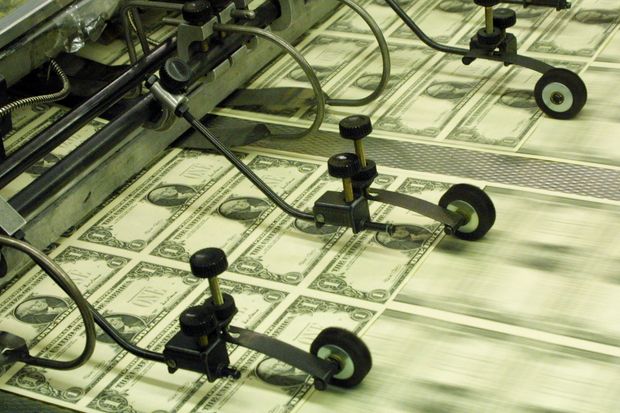
The U.S. dollar is ending the year under pressure, with a closely watched gauge of its value trading at a 2 1/2-year low on Tuesday, reinforcing the belief that the currency has entered a long-term downtrend.
The ICE U.S. Dollar Index DXY, -0.74%, a measure of the U.S. currency against a basket of six major rivals, fell 0.6% to 91.32, trading at its lowest since April 2018. That largely reflected a surge by the euro EURUSD, +1.20%, which has a nearly 60% weighting in the index and was up 1% to trade at $1.2055 — its highest versus the dollar since April 2018.
The DXY’s move lower is a decisive break below the trading range between 92 and 95 that had been in place since late July and suggests a new range between 92 and 90 may now be in place, said Steven Ricchiuto, chief U.S. economist at Mizuho Securities USA, which has a 90 year-end target for the index.
The euro, which is up more than 7% versus the dollar in the year to date, began its last leg up ahead of preliminary data during European trading hours that showed eurozone inflation fell 0.3% in November.
“It is interesting that the latest push down began shortly before more evidence of deflationary pressures in Europe was released, suggesting the move is more about euro strength and not about dollar weakness,” he said, in a note.
“The country with the highest rate of deflation should have the strongest currency and, with the [U.S.] economy still experiencing 1.5% inflation, the dollar should continue to move lower,” Ricchiuto said.
Of course, euro strength is likely not welcome in eurozone countries or at the European Central Bank. ECB officials previously pushed back when the dollar breached the $1.20 level.
But a decidedly weaker dollar versus the Chinese currency may be serving as something of a pressure valve, analysts have said.
Read: How a rising Chinese yuan removes a barrier to a broadly weaker U.S. dollar
It’s been a roller-coaster year for the dollar, with the index hitting a three-year high as the COVID-19 pandemic closed down much of the global economy and prompted a world-wide scramble for greenbacks in February and March. The dollar retreated as the Federal Reserve and other central banks flooded the international financial system with liquidity, reducing risk. That included the Fed expanding existing dollar swap lines with other central banks and establishing new ones with others.
Since then the dollar has been on a downward path, with some periodic bounces. A weaker dollar — and a continued downtrend — is generally seen as a positive for U.S. and global equities.
See: Here’s what the U.S. dollar’s fall means for the stock market










Add Comment